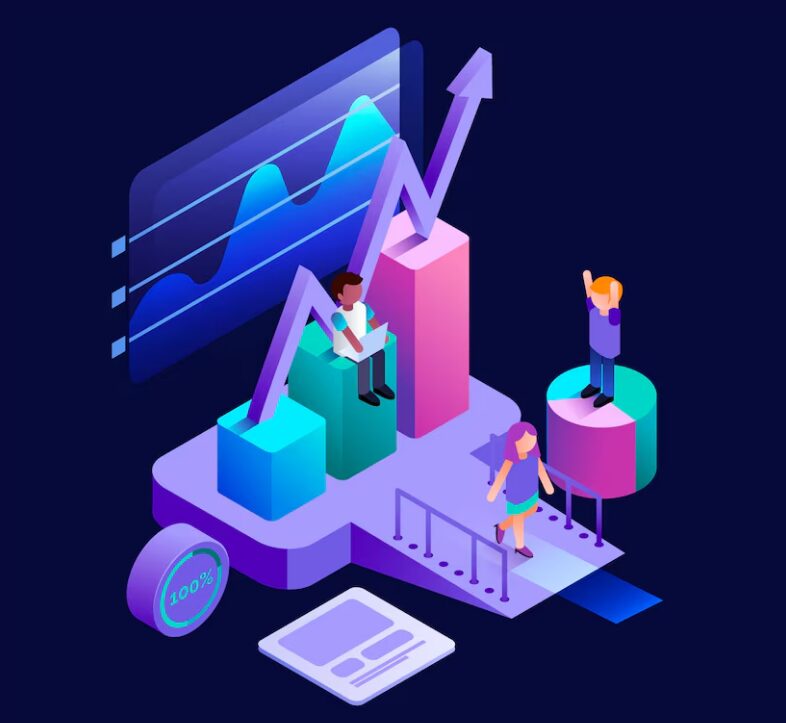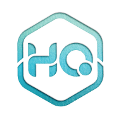If you are running a B2B platform, you understand the importance of driving conversions to generate substantial returns on investment. With the increasing competition in the B2B space, having a robust conversion rate optimization (CRO) strategy can make all the difference in your success. In this article, we will explore the ins and outs of B2B conversion rate optimization, its significance, and the strategies and techniques that can help you elevate your business-to-business success.
By the end of this article, you’ll have a comprehensive understanding of B2B CRO strategies that can improve your website’s ROI, boost your sales, and increase customer retention. Let’s jump into the details of B2B conversion rate optimization and explore the different factors that contribute to its success.
Table of Contents
Understanding B2B Conversion Rate Optimization
When it comes to B2B conversion rate optimization, there are a few unique challenges that businesses face. For example, B2B sales cycles are typically longer, and there are often multiple decision-makers involved in the process. Additionally, B2B buyers are often more focused on value and ROI, rather than simply making a purchase.
To address these challenges, businesses need to optimize their conversion strategies specifically for the B2B space. This involves creating targeted messaging and content that speaks to the needs and pain points of B2B buyers, as well as providing a clear and streamlined path to purchase.
At the heart of B2B conversion rate optimization is a thorough understanding of your target audience. You need to know who they are, what they need, and what concerns or objections they may have. This knowledge can then be used to craft a conversion strategy that speaks directly to those needs and concerns and offers a compelling value proposition.
Unique Challenges and Opportunities for B2B Conversion Rate Optimization
| Challenges | Opportunities |
|---|---|
| Longer sales cycles | Opportunity to build relationships and provide ongoing value |
| Multiple decision-makers involved | Opportunity to provide tailored messaging and address individual concerns |
| Focus on value and ROI | Opportunity to showcase the benefits and ROI of your offering |
Effective B2B conversion rate optimization requires a team effort, involving collaboration between marketing, sales, and customer service teams. By working together to create a streamlined conversion path that meets the needs of B2B buyers, businesses can drive success in this lucrative and complex sector.
Key Factors Impacting B2B Conversion Rates

Improving B2B conversion rates requires a deep understanding of the key factors that influence the decision-making process of your target audience. From website design and user experience to persuasive copywriting and effective call-to-action strategies, there are several elements that businesses need to optimize to boost their B2B conversion rates.
Website Design and User Experience
Your website design and user experience play a critical role in driving conversions. A well-designed website with clear navigation, intuitive user journeys, and concise messaging will help visitors quickly find what they need and make it easy for them to take action. Ensure your website is mobile-friendly and easy to use on all devices.
Copywriting and Messaging
Your copywriting and messaging need to be persuasive, engaging, and tailored to your target audience. Speak directly to their pain points and emotions, demonstrate how your product or service can solve their problems, and provide social proof and testimonials. Personalization is key, so use data to segment your audience and create personalized messaging that resonates with them.
Effective Call-to-Action Strategies
Your call-to-action (CTA) is the final push that convinces visitors to take action and convert. Make sure your CTAs are clear, prominent, and visually appealing. Use action-oriented language that creates a sense of urgency and provides a clear benefit to the user. Test different CTAs to see what works best for your audience.
Trust and Credibility
Building trust and credibility with your audience is crucial for driving conversions. Use high-quality images and videos, provide social proof and testimonials, and include relevant certifications and awards. Ensure your website is secure and that you have a clear privacy policy in place. Be transparent with pricing and provide clear explanations of your products and services.
Key Factors Impacting B2B Conversion Rates
| Factors | Description |
|---|---|
| Website Design and User Experience | A well-designed website with clear navigation, intuitive user journeys, and concise messaging will help visitors quickly find what they need and take action. |
| Copywriting and Messaging | Persuasive, engaging, and tailored messaging can directly speak to the target audience’s pain points and emotions, solve their problems, provide social proof, and tailor messaging to prospective customers. |
| Effective Call-to-Action Strategies | Concise and prominent CTAs that create a sense of urgency with action-oriented language and a clear benefit create a final push that encourages visitors to convert. |
| Trust and Credibility | Building trust and credibility with high-quality images and videos, relevant certifications and awards, and a secure website by being transparent with pricing and product/service explanations is crucial. |
By optimizing these key factors, businesses can improve their B2B conversion rates and increase their chances of success in the competitive B2B space.
Strategies for B2B Conversion Rate Optimization

To optimize your B2B conversion rates, consider implementing proven tactics such as A/B testing, personalization, and lead nurturing. A/B testing involves creating two versions of a webpage or element and comparing their performance to determine which version is more effective in generating conversions. Personalization, on the other hand, involves tailoring your content, messaging, and campaigns to address the specific needs and pain points of your B2B audience, increasing the likelihood that they will convert. Finally, lead nurturing involves building relationships with prospects through targeted email campaigns, relevant content, and other tactics to move them through the sales funnel and ultimately convert them into customers.
A/B Testing
With A/B testing, you can identify what factors or design elements on your website influence your B2B conversion rates the most. Create two versions of a webpage or element, with only one variable differing between the two, and use one as a control and one as a variant. Track and compare their performance to determine which version yields better results and implement the changes to attract more business from your B2B audience.
Personalization
Personalization enables you to tailor your content and campaigns to the specific needs of your B2B audience. For instance, they may have different information requirements and varying timelines in comparison with a B2C audience. Utilize the data collected from your website and email campaigns to segment your audience and provide targeted messaging, custom call-to-actions, and personalized landing pages to increase the chances of conversions.
Lead Nurturing
Lead nurturing involves using email campaigns to drive conversions through customized and relevant content for specific target audiences. Use targeted lead magnets to entice your audience to sign up for your email list and then move them through your sales funnel using pre-written emails that cater to their unique requirements. For instance, a case study of a technology company showing how you helped other technology companies.
Analyzing B2B Website Conversion Optimization

In today’s digital era, having a website is crucial for any business, including those in the B2B sector. However, having a website is not enough; you need to optimize it to drive conversions and increase revenue. In this section, we will focus on the specific aspects of website conversion optimization for B2B platforms.
The Importance of Landing Page Optimization
Landing pages are critical in B2B website conversion optimization as they are often the first point of contact between potential customers and your business. Therefore, it is crucial to ensure that your landing pages are designed to capture and maintain your audience’s attention and interest. To achieve that, you need to make sure that your landing pages:
- Clearly communicate your value proposition and differentiate yourself from competitors;
- Have clean and visually appealing designs that are consistent with your brand identity;
- Load quickly, providing an exceptional user experience;
- Feature a clear, prominent call-to-action that compels users to take action.
Effective Forms in B2B Website Conversion Optimization
Forms play a crucial role in B2B website conversion optimization as they allow businesses to collect important information from potential leads. However, poorly designed forms can hurt your conversion rates as they can be frustrating, confusing, or even intimidating for your users. To design effective forms that encourage conversions, consider the following best practices:
- Keep forms short and straightforward, only asking for information that is relevant and necessary;
- Use a clear and legible font, and ensure that the form is easy to read and complete;
- Provide helpful tips or inline validation to guide users and improve completion rates;
- Ensure that the form is mobile-responsive and works on all devices.
Streamlined Checkout Processes for B2B Website Conversion Optimization
Checkout processes can be complex and lengthy, which can often deter potential customers from completing their purchases. Therefore, streamlining your checkout process is crucial for improving your B2B website conversion rates. To optimize your checkout process, consider the following:
- Implement a progress bar to show users how far along they are in the process;
- Offer multiple payment options for added convenience and flexibility;
- Minimize the number of clicks and steps involved;
- Ensure that your checkout process is secure and trustworthy, providing reassurance for your customers.
By implementing these website optimization strategies, you can significantly improve your B2B website’s conversion rate, boosting your revenue and success in the long run.
Leveraging Data for B2B Conversion Rate Optimization
Data plays a critical role in B2B conversion rate optimization. By analyzing customer data and behavior, businesses can make informed decisions and optimize conversion rates effectively. Here are some effective strategies for leveraging data to improve B2B conversion rates:
1. Use Analytics to Track Performance
Set up analytics tools to monitor website and campaign performance. Analyze data on visitor behavior, traffic sources, and conversion rates to identify areas for improvement. Use this information to optimize your website and marketing efforts for higher conversions.
2. Segment Your Audience for Personalization
Segment your audience based on their behavior, preferences, and demographics. Use this data to personalize messaging and content to better appeal to each segment. Personalized experiences are more likely to engage users and drive conversions.
3. Use A/B Testing for Optimization
A/B testing involves creating two versions of a page or campaign and testing them against each other to measure performance. Use this technique to test different elements like headlines, imagery, and calls to action. This data can help you optimize for higher conversion rates.
4. Use Customer Data to Improve Lead Nurturing
Use customer data to develop effective lead-nurturing campaigns. Analyze customer behavior to identify where they are in the buying process and create relevant content to move them further down the funnel. Providing relevant content can increase engagement and boost conversions.
5. Analyze Sales Data for Optimization
Use sales data to identify trends and patterns in buying behavior. This data can help you optimize your website and campaigns for higher conversions. For example, if customers tend to purchase certain products together, consider creating bundled offers to increase sales and conversions.
By leveraging data effectively, businesses can gain valuable insights and optimize their B2B conversion rates for maximal success.
Nurturing B2B Leads for Higher Conversions
Lead nurturing is a critical component of B2B conversion rate optimization. By building relationships with prospects and guiding them through the sales funnel, businesses can increase their chances of converting those leads into customers.
Lead Scoring
A key tactic for effective lead nurturing is lead scoring. This involves assigning numerical values to different actions that prospects take, such as filling out a contact form or downloading a piece of content. By tracking these actions, businesses can identify which leads are most engaged and prioritize their outreach efforts accordingly.
Email Nurturing Campaigns
Email nurturing campaigns can also be highly effective in guiding leads through the sales funnel. By sending targeted, personalized emails based on each lead’s behavior and interests, businesses can nurture them with relevant content and encourage them to take the next step in the conversion process.
Case Study: B2B Lead Nurturing
| Challenge | Solution | Results |
|---|---|---|
| A B2B SaaS company was struggling to convert trial users into paying customers. | The company developed a lead nurturing campaign that sent targeted emails to trial users based on their behavior and interests. | The campaign resulted in a 50% increase in conversion rates for trial users, and a 20% increase in overall revenue. |
By implementing lead nurturing strategies such as lead scoring and email campaigns, B2B businesses can increase their conversion rates and drive success in the highly competitive B2B marketplace.
Optimizing B2B Conversion Rates Through Personalization
In the age of information overload, personalization is key to capturing your B2B audience’s attention and driving conversions. By tailoring messaging, content, and campaigns to the unique needs and pain points of your potential customers, you can build stronger connections and increase your chances of closing deals.
Effective B2B CRO tactics for personalization include:
- Creating buyer personas based on data and insights to develop a deeper understanding of your audience
- Using dynamic content to personalize messages and CTAs based on previous engagement and behavior
- Sending targeted emails with personalized subject lines and content
- Offering personalized content recommendations based on past interactions and preferences
However, it’s important to balance personalization with respect for privacy and data protection laws. Make sure to obtain consent and be transparent about how you are using personal data to avoid alienating potential customers and damaging your brand reputation.
Streamlining B2B Conversion Funnels
Optimizing your B2B conversion funnels can significantly improve conversion rates, leading to increased sales and revenue. Clear navigation, intuitive user journeys, and seamless transitions between touchpoints can greatly enhance the overall user experience, boosting your chances of converting prospects into loyal customers.
Focus on User Experience
Developing an intuitive user journey is key to improving your conversion rates. You need to make it easy for your users to navigate through the different stages of your conversion funnel. Ensure that your forms are straightforward and easy to complete, with no unnecessary steps or fields. The more friction you add to the process, the more likely users will drop out.
Implement A/B Testing
A/B testing can help you identify which elements of your conversion funnel are working well and which ones need improvement. By testing different versions of your pages and forms, you can determine which variations are most effective in driving conversions. You can test everything from the color and placement of your call-to-action buttons to the length of your forms and the messaging on your landing pages.
Optimize for Mobile
With more and more users accessing websites on mobile devices, optimizing your conversion funnel for mobile is crucial. Ensure that your mobile pages load quickly and have easy-to-use navigation. Consider using responsive design to ensure that your pages are easy to read and navigate on any device.
Use Personalization
Personalization can greatly enhance the user experience and improve conversion rates. By tailoring your content to individual users based on their behavior, preferences, and demographics, you can increase engagement and drive more conversions. Consider using personalized landing pages, targeted email campaigns, and personalized messaging throughout your conversion funnel.
| Conversion Funnel Best Practices | |
|---|---|
| Keep forms as short as possible | Long forms lead to higher abandonment rates |
| Include clear and compelling call-to-action buttons | Make it easy for users to take the next step |
| Use clear and concise messaging | Avoid confusing or ambiguous language |
| Test different versions of your pages and forms | Identify which variations are most effective |
| Optimize for mobile devices | Ensure your pages load quickly and have easy-to-use navigation |
| Personalize your messaging and content | Tailor your content to individual users based on their behavior and preferences |
By streamlining your B2B conversion funnels and implementing these best practices, you can optimize your conversion rates and drive greater success for your business.
Effective B2B Conversion Rate Measurement and Analytics
Measuring and analyzing conversion rates is the backbone of B2B conversion rate optimization. Through data analysis, businesses can refine their strategies for optimizing conversion rates and achieve the best possible ROI from their online efforts. To do so, there are some key metrics and analytics you should track:
1. Conversion rate by channel
It is essential to track the conversion rates of your different marketing channels to determine which ones are performing better than others. This allows you to allocate your resources effectively and optimize your marketing efforts towards the channels with the highest conversion rates.
2. Conversion rate by landing page
Landing pages are the gateway to your website and a significant driver of conversions. Tracking the conversion rates of different landing pages can help you identify which ones resonate better with your audience and refine your optimization strategies accordingly.
3. Conversion rate by campaign
Segmenting your data by marketing campaign can help you understand which campaigns are driving the highest conversions. This allows you to optimize your efforts on the right campaigns to increase your conversion rates and ROI.
4. User behavior analysis
Understanding the user journey on your website is essential for effective conversion rate optimization. By tracking user behavior, you can identify pain points and friction in the user journey and eliminate them to improve your conversion rates.
5. Funnel visualization
Funnel visualization allows you to track the conversion rates at every stage of the funnel, from the initial visit to final purchase. This, in turn, allows you to identify points of friction and optimize your funnel to reduce drop-offs and increase conversions.
By tracking these key metrics and analytics, you can gain insights into how your optimization strategies are performing, refine them continuously, and achieve better ROI from your B2B platforms.
Integrating B2B Conversion Rate Optimization into Your Marketing Strategy
As a B2B platform, it’s essential to integrate conversion rate optimization (CRO) into your marketing strategy to increase conversions. Effective B2B CRO tactics align with your marketing objectives and create a cohesive plan for success. Below are tips to integrate B2B conversion rate optimization into your marketing strategy and improve conversions:
1. Develop a Clear Understanding of Your Audience
Creating a buyer persona is a critical step in understanding your audience. Use this to personalize your messaging and tailor your content to resonate with your prospects’ needs. This can help build trust with your audience, leading to increased conversions.
2. Combine CRO with Paid Advertising
When running a paid advertising campaign, including CRO tactics can help increase conversions. Targeting specific buyer personas, A/B testing ad copy, and landing page optimization can lead to higher conversion rates and optimized ad performance.
3. Leverage Email Marketing and Lead Nurturing Campaigns
Email marketing and lead nurturing campaigns are essential components of B2B marketing. Including CRO tactics in these efforts can help drive higher conversions. Personalizing your email communications, sending targeted content, and analyzing conversion data are all tactics that can improve B2B conversion rates.
4. Utilize Content Marketing
Content marketing is a powerful tactic for B2B platforms. Including CRO tactics such as optimizing content for search engines, A/B testing content, and creating targeted landing pages can help drive higher conversion rates.
5. Analyze and Optimize
Measuring the effectiveness of your marketing efforts is crucial for optimizing conversion rates. Analyze your data regularly and adjust your strategy as needed to improve results. Use A/B testing to experiment and compare performance to optimize conversion rates continually.
Integrating B2B conversion rate optimization into your marketing strategy should be a top priority for boosting your platform’s success. Personalization, paid advertising, email marketing and lead nurturing campaigns, content marketing, and analyzing data are effective B2B CRO tactics to drive higher conversion rates.
Conclusion
In conclusion, B2B conversion rate optimization is key to driving success for business-to-business platforms. By understanding the unique challenges and opportunities that businesses face in the B2B sector, you can effectively optimize conversion rates and boost your sales and ROI. By implementing the strategies and techniques presented in this article, such as personalized messaging, effective lead nurturing, and streamlined conversion funnels, you can improve your website’s user experience, connect with your audience, and convert more leads into customers.
It’s important to remember that ongoing measurement and analysis of your conversion rates is crucial in ensuring the success of your optimization efforts. By integrating B2B conversion rate optimization into your overall marketing strategy and aligning it with your business objectives, you can create a cohesive plan for success that drives growth and improves your bottom line. We hope you found this article informative and useful in elevating your B2B success. Start implementing these tactics today and see the results for yourself!




